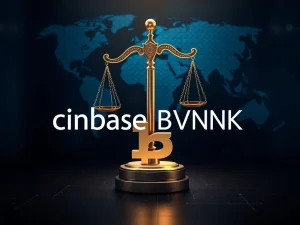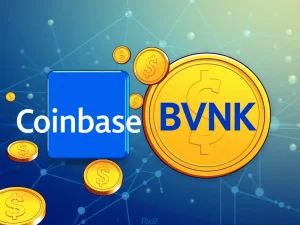Unveiling the **Phenomenal** Fastest Growing Blockchains: Top 10 by Active Crypto Users

Are you tracking the next big thing in decentralized technology? The cryptocurrency landscape is evolving rapidly. Understanding the **fastest growing blockchains** is crucial for investors and enthusiasts alike. This year, real user engagement and groundbreaking innovation, not just speculative hype, drive growth. From foundational Layer 1 protocols to efficient Layer 2 scaling solutions, networks are competing fiercely. They attract millions of **active crypto users** through low-cost transactions, seamless integrations, and thriving decentralized finance (DeFi) and non-fungible token (NFT) ecosystems. This comprehensive article ranks the top 10 fastest-growing blockchains based on their active user growth. We delve into what makes them tick and the challenges they face in this dynamic environment.
Understanding Blockchain Growth and Active Crypto Users
Blockchain growth in 2025 hinges on real usage and significant technological upgrades. Speculation or hype no longer solely dictates success. Instead, the number of **active crypto users**, measured by unique wallet addresses completing transactions, has become the primary metric. This shift indicates a maturing industry focused on utility. Moreover, the expansion of **DeFi and NFTs** ecosystems, alongside increased stablecoin adoption, continues to onboard millions of new participants. Strategic partnerships with major platforms and institutional inflows, especially through Bitcoin ETFs, further accelerate **blockchain adoption**. However, the industry still faces hurdles. These include inflated metrics, scalability trade-offs, regulatory pressure, and intense competition between Layer 1 and Layer 2 solutions. Let us explore the criteria for our ranking.
Criteria for Ranking the Fastest Growing Blockchains
Our ranking of the top 10 **fastest growing blockchains** of 2025 prioritizes active user numbers. Each entry details whether the network is a Layer 1 (L1) or Layer 2 (L2) solution. We also highlight the specific metrics supporting its rise, the main drivers behind its impressive growth, and the unique challenges it confronts. For clarity, L1 blockchains provide foundational infrastructure. They feature native consensus mechanisms. Conversely, L2 solutions enhance the scalability of L1 blockchains and reduce their transaction costs. Ethereum, for example, functions as an L1 blockchain. Polygon operates as an L2. An “active user” specifically refers to a unique wallet address completing at least one transaction within a month. Fully diluted valuation (FDV) also provides insight. This theoretical total market value assumes all tokens are in circulation at the current price. It offers a broader perspective on a project’s potential value. Furthermore, it helps determine if a token is overvalued or undervalued relative to its total potential supply.
Top 10 Fastest Growing Blockchains by Active Users
1. Solana: A Leader Among Fastest Growing Blockchains
Solana stands out as a high-speed L1 blockchain. It utilizes a proof-of-history (PoH) consensus mechanism. This design targets scalable decentralized applications (DApps) and marketplaces. Solana boasts an impressive monthly active user count of 57 million. Its FDV is $107.2 million, with a 30-day token trading volume of $284.2 billion. Solana’s growth has been significantly fueled by its robust **DeFi and NFTs** ecosystem. A surge in high-frequency memecoin trading also contributes. The Firedancer validator client has boosted reliability. Increasing institutional adoption further strengthens its position. However, Solana faces challenges. Past network outages affect its reliability. Critics also point to its degree of centralization. Competition from various L2 solutions remains stiff. Did you know? Solana’s proof-of-history allows it to process thousands of transactions per second. This powers DeFi, NFTs, and even memecoin trading at lightning speed.
2. Near Protocol: Innovating with AI for Active Crypto Users
Near Protocol is another prominent Layer 1 blockchain. It employs a thresholded proof-of-stake (TPoS) consensus. Near focuses on scalability, developer-friendly tools, and integrating AI-native features for DApps. It reports 51.2 million monthly active addresses. Its FDV is $3.1 million, with a 30-day token trading volume of $7.8 million. Key drivers include its innovative AI integration for user-owned agents and intents. Low transaction fees and carbon neutrality also attract users. Partnerships, such as with EigenLayer for fast finality, expand its reach. Ecosystem expansions in DeFi and gaming further boost its user base. Nevertheless, Near faces competition from faster L1s and L2s. Price volatility persists despite user growth. Potential vulnerabilities in sharding complexity also present challenges. Did you know? Near Protocol prides itself on carbon neutrality and low fees. It shows strong momentum against fierce competition.
3. BNB Chain: Powering Diverse Blockchain Adoption
BNB Chain, backed by Binance, operates as an L1 blockchain. It supports DeFi, NFTs, and DApps with Ethereum Virtual Machine (EVM) compatibility. It records 46.4 million monthly active addresses. Its FDV stands at $121.2 billion, with a 30-day token trading volume of $56.1 billion. A reduced block time to 0.75 seconds enhances its performance. AI integrations for data ownership also drive its appeal. However, BNB Chain faces centralization concerns due to Binance’s backing. Regulatory scrutiny also poses a significant challenge for its continued expansion.
4. Base: Coinbase’s Bridge to More Active Crypto Users
Coinbase developed Base, an Ethereum L2 blockchain. It utilizes optimistic rollups. Base focuses on low-cost DeFi, consumer apps, and seamless integration. It attracts 21.5 million monthly active addresses. Its FDV is $2.92 billion. Ultra-low fees, averaging $0.01, are a major draw. Coinbase’s vast user base, exceeding 100 million, provides a massive onboarding funnel. Stablecoin flows and partnerships for consumer DApps further boost its growth. Yet, Base experiences network congestion from high activity. Its dependence on Ethereum for security is also a factor. Regulatory compliance, as a newer ecosystem, presents ongoing challenges.
5. Tron: Emphasizing Stablecoin Transactions and Blockchain Adoption
Tron is a high-throughput L1 blockchain. It focuses on decentralized content sharing and integration with Telegram. It also emphasizes low-cost stablecoin transactions. Tron registers 14.4 million monthly active addresses. Its FDV is $33.5 billion, with a 30-day token trading volume of $51.7 billion. Negligible transaction fees are a primary driver. AI and cross-chain integrations also contribute to its appeal. Partnerships, such as with Rumble Cloud, expand its utility. However, Tron faces ongoing regulatory scrutiny. Centralization risks are also a concern for the network.
6. Bitcoin: Institutional Inflows Drive Active Users
Bitcoin remains the original decentralized cryptocurrency. It uses a proof-of-work (PoW) consensus. Bitcoin serves primarily as digital gold for store-of-value and payments. It records 10.8 million monthly active addresses. Its FDV is $2.3 trillion, with a 30-day token trading volume of $1.3 trillion. Institutional inflows via exchange-traded funds (ETFs) are a significant driver. As of Q4 2024, professional investors with over $100 million under management hold Bitcoin ETFs worth $27.4 billion. Reduced supply due to halving events and its adoption as a strategic reserve also boost its value. Challenges include high energy consumption. Volatility from macroeconomic factors also impacts its price.
7. Aptos: Scalability for the Next Wave of DeFi and NFTs
Aptos is an L1 blockchain created by former Meta engineers. It uses the Move language. Aptos emphasizes scalability, DeFi, and developer growth for DApps. It has 10 million monthly active addresses. Its FDV is $5.3 billion, with a 30-day token trading volume of $13 billion. Peak transaction speeds of 19,200 TPS demonstrate its capability. The Move language ensures secure contracts. Partnerships, like Tether’s USDt (USDT) launch, expand its ecosystem. However, Aptos needs broader adoption. Competition from established L1s also presents a hurdle.
8. Ethereum: The Foundation for Layer 1 and Layer 2 Innovation
Ethereum is a leading L1 blockchain. It supports smart contracts, DeFi, and NFTs. It boasts a vast developer ecosystem using a proof-of-stake (PoS) consensus. Ethereum records 9.6 million monthly active addresses. Its FDV is $522.7 billion, with a 30-day token trading volume of $1.1 trillion. The Pectra upgrade promises better user experience and scalability. ETF inflows and institutional staking further enhance its appeal. Yet, Ethereum still grapples with scalability issues. Higher fees compared to rivals are a concern. Regulatory pressures also remain a constant challenge.
9. Polygon: A Key Player in Layer 1 and Layer 2 Scaling
Polygon offers a multichain scaling solution for Ethereum. It uses PoS. Polygon supports DeFi, NFTs, and enterprise apps with EVM compatibility. It sees 7.2 million monthly active addresses. Its FDV is $2.6 billion, with a 30-day token trading volume of $4.2 billion. Upgrades like Heimdall v2 enhance interoperability. Partnerships with Fortune 500 firms further solidify its position. Nevertheless, Polygon faces regulatory scrutiny under Markets in Crypto-Assets (MiCA). Competition from other L2s also remains intense. Did you know? The Polygon upgrade Heimdall v2 has boosted interoperability across chains. This solidifies Polygon’s role as a multichain scaling hub in the web3 world.
10. Arbitrum One: Enhancing Ethereum’s Active Crypto Users
Arbitrum One is a leading Ethereum L2. It uses optimistic rollups for faster, cheaper transactions. It also inherits Ethereum’s security. Arbitrum One has 4 million monthly active addresses. Its FDV is $5.1 billion, with a 30-day token trading volume of $14.3 billion. Integrations like Robinhood for tokenized assets drive its growth. Upgrades like Stylus contribute to lower fees. However, Arbitrum One depends on the Ethereum mainnet. Regulatory uncertainty also persists. Competition from Optimism and other L2 solutions adds pressure.
Key Trends Driving Blockchain Adoption
The narrative of blockchain in 2025 is one of accelerated growth. New technologies and mainstream acceptance propel expansion. This occurs at both the foundational L1 level and the scaling L2 layer. Several noticeable trends underscore this surge:
- Stablecoin Adoption Boosting Transaction Volumes: Stablecoins like USDT and USDC significantly increase transaction activity. This enhances liquidity and user engagement across various ecosystems.
- Layer-2 Solutions Enhancing Scalability and Reducing Costs: Scaling solutions, including Arbitrum One and Base, dramatically improve Ethereum’s transaction capacity. They also lower fees to as little as $0.01 per transaction. This makes DApps more affordable and accessible for everyone.
- DeFi and NFT Ecosystems Attracting New Users: Decentralized finance protocols and NFT marketplaces continue to onboard millions of new users. Services like GMX on Arbitrum and Polygon’s substantial NFT volume ($227 million in Q1 2025) offer innovative tools for finance and digital collectibles.
- Integration with Mainstream Platforms: Blockchains achieve greater reach through integration with major platforms. For instance, Base is built directly into Coinbase. This provides access to over 100 million potential users.
- Institutional Interest and Partnerships: Growing institutional involvement lends significant legitimacy to blockchain technology. Bitcoin ETFs received $36.4 billion in 2024. Corporate partnerships with blockchain networks also enhance credibility. Starbucks, for example, partnered with Microsoft and Azure blockchain to create a traceability system.
User Growth, Challenges, and the Path Forward for Fastest Growing Blockchains
The rapid growth of the top 10 **fastest growing blockchains** by active users in 2025 highlights the expanding role of decentralized technology. Networks like Solana and Arbitrum lead this adoption. They offer low-cost transactions, innovative DeFi applications, and mainstream integrations. However, several key challenges remain that the industry must address:
- Inflated Metrics: Bot activity and inactive addresses can sometimes exaggerate true user growth. This makes accurate measurement difficult.
- Scalability vs. Decentralization: Some high-speed networks may compromise on decentralization to achieve performance. Finding the right balance is crucial.
- Regulatory Uncertainty: Increased scrutiny of stablecoins and concerns over illicit activities create adoption risks. Clear regulations are essential for broader acceptance.
- Market Competition: Intense rivalry exists between established L1 chains and emerging Ethereum L2 solutions. Innovation is key to staying ahead.
In response, blockchains are constantly innovating. They develop better bot detection mechanisms and improve scaling solutions. They also focus on regulatory compliance and offer unique features like AI integration and asset tokenization. These efforts are crucial for sustaining long-term growth and shaping the future of the entire ecosystem. This article does not contain investment advice or recommendations. Every investment and trading move involves risk. Readers should conduct their own thorough research when making any financial decision.







